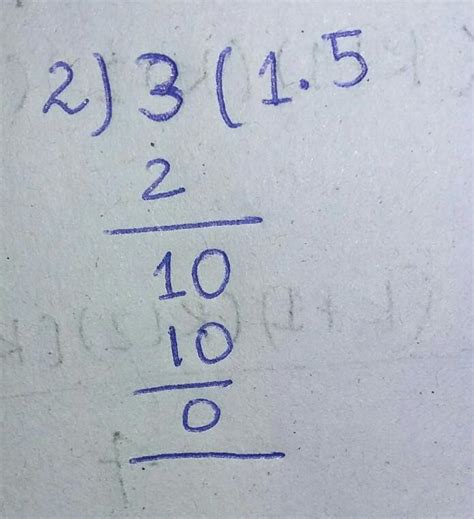What Is 2 3 Divided By 2
News Co
Apr 04, 2025 · 5 min read

Table of Contents
What is 2/3 Divided by 2? A Comprehensive Guide to Fraction Division
Understanding fraction division can be a stumbling block for many, but it's a crucial skill in mathematics and various fields. This comprehensive guide will not only answer the question "What is 2/3 divided by 2?" but also equip you with the knowledge to tackle similar problems confidently. We'll explore the concept of fraction division, different methods to solve it, and real-world applications to solidify your understanding.
Understanding Fraction Division
Before diving into the specific problem, let's establish a solid foundation in fraction division. Dividing by a fraction is essentially the same as multiplying by its reciprocal. The reciprocal of a fraction is obtained by flipping the numerator and the denominator. For example, the reciprocal of 2/3 is 3/2.
This principle allows us to transform a division problem into a multiplication problem, simplifying the calculation significantly. The general formula is:
a/b ÷ c/d = a/b × d/c
Where 'a', 'b', 'c', and 'd' are numbers, and 'b' and 'c' are not zero (division by zero is undefined).
Solving 2/3 Divided by 2
Now, let's tackle the problem at hand: 2/3 divided by 2. First, we need to express the whole number 2 as a fraction. Any whole number can be represented as a fraction with a denominator of 1. Therefore, 2 can be written as 2/1.
Our problem now becomes:
2/3 ÷ 2/1
Applying the rule of fraction division, we change the division to multiplication by using the reciprocal of 2/1, which is 1/2:
2/3 × 1/2
To multiply fractions, we multiply the numerators together and the denominators together:
(2 × 1) / (3 × 2) = 2/6
Finally, we simplify the fraction by dividing both the numerator and the denominator by their greatest common divisor, which is 2:
2/6 = 1/3
Therefore, 2/3 divided by 2 equals 1/3.
Alternative Methods and Visualizations
While the reciprocal method is efficient, let's explore alternative approaches to solidify your understanding.
Method 1: Using the concept of parts:
Imagine you have 2/3 of a pizza. You want to divide this 2/3 into two equal parts. Each part would represent (2/3) / 2 = 1/3 of the original pizza. This visual representation helps to intuitively grasp the solution.
Method 2: Converting to decimals:
You can convert the fractions to decimals and perform the division. 2/3 is approximately 0.6667. Dividing 0.6667 by 2 gives approximately 0.3333, which is close to 1/3. This method is useful for quick estimations but might not provide an exact answer, especially with fractions that don't have exact decimal equivalents.
Real-World Applications of Fraction Division
Fraction division isn't just a theoretical concept; it finds practical applications in many real-world scenarios:
-
Baking and Cooking: Recipes often require dividing ingredients. For instance, if a recipe calls for 2/3 cup of flour and you want to halve the recipe, you need to calculate (2/3) / 2 = 1/3 cup of flour.
-
Sewing and Tailoring: Cutting fabric requires precise measurements. If you need to divide 2/3 of a yard of fabric into two equal parts, fraction division helps determine the length of each piece.
-
Construction and Engineering: Precise measurements and material calculations are essential. Dividing materials or lengths often involves fractions and fraction division.
-
Finance and Budgeting: Dividing a budget or calculating shares often involves fractions. For example, dividing 2/3 of your savings into two equal parts for different investments.
-
Data Analysis: When working with datasets, you might need to divide fractions to normalize or scale data.
Expanding on Fraction Division: More Complex Problems
Once you've grasped the basics, you can tackle more complex problems involving mixed numbers, multiple fractions, and even variables. Let's look at a few examples:
Example 1: Dividing a mixed number by a fraction:
Let's say we want to solve 1 1/2 ÷ 2/3. First, convert the mixed number into an improper fraction: 1 1/2 = 3/2. Then, apply the rule of fraction division:
3/2 ÷ 2/3 = 3/2 × 3/2 = 9/4 = 2 1/4
Example 2: Dividing a fraction by a mixed number:
Solve 2/3 ÷ 1 1/2. Again, convert the mixed number to an improper fraction: 1 1/2 = 3/2. Then:
2/3 ÷ 3/2 = 2/3 × 2/3 = 4/9
Example 3: Dividing multiple fractions:
Solve (2/3) ÷ (1/2) ÷ (1/4). Work from left to right:
(2/3) ÷ (1/2) = 2/3 × 2/1 = 4/3
Then, (4/3) ÷ (1/4) = 4/3 × 4/1 = 16/3 = 5 1/3
Troubleshooting Common Mistakes
Here are some common errors to avoid when performing fraction division:
-
Forgetting to use the reciprocal: Remember to flip the second fraction (the divisor) before multiplying.
-
Incorrectly multiplying or simplifying fractions: Double-check your multiplication and simplification steps to avoid errors.
-
Not converting mixed numbers to improper fractions: Always convert mixed numbers to improper fractions before performing division.
-
Division by zero: Avoid attempting to divide by a fraction with a zero denominator, as this is undefined.
Conclusion: Mastering Fraction Division
Understanding and mastering fraction division is a critical step in building a strong mathematical foundation. This guide provided a comprehensive explanation of the process, along with several methods and real-world examples to reinforce your learning. By practicing regularly and understanding the underlying principles, you can confidently solve fraction division problems and apply this knowledge to various aspects of your life and studies. Remember to break down complex problems into smaller, manageable steps and always double-check your work! With consistent effort, you'll master this essential mathematical skill.
Latest Posts
Related Post
Thank you for visiting our website which covers about What Is 2 3 Divided By 2 . We hope the information provided has been useful to you. Feel free to contact us if you have any questions or need further assistance. See you next time and don't miss to bookmark.